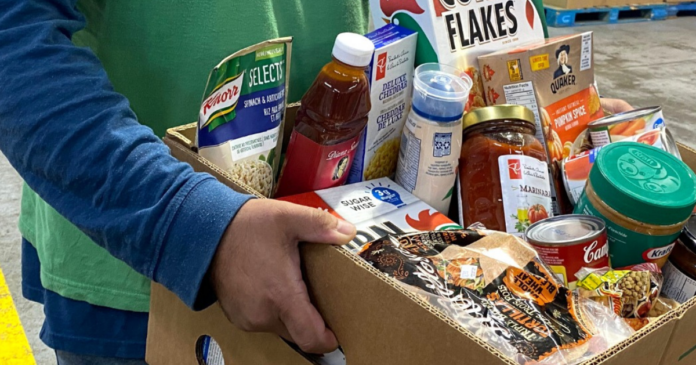Poverty rates are climbing and provinces aren’t catching up in tackling the growing affordability crisis.
When it comes to avoiding poverty, Canada’s provinces are nearing the lowest grade possible almost across the board, according to Food Banks Canada’s 2024 Poverty Report Card.
The only provinces not to receive D-’s or D+’s are Quebec and Prince Edward Island, though they’re still scraping by with a C+ and C-, respectively.
The Poverty Report Card accounts for four measures: experience of poverty, poverty measures, material deprivation, and legislative process. Each measure accounts for various indicators, which receive their own rating and grade, affecting the overall rating. When analyzing the tables, the most common grade among indicators is an F.
Between 2020 and 2022, poverty rates in Canada have increased by 55%, from 6.4% to nearly 10% of people in Canada living below the poverty line. Almost a quarter of all Canadians experience food insecurity.
The reasons for the alarming increase noted by Food Banks Canada are rapid population growth without the necessary social infrastructure, interest rate hikes that were required due to inflation rates not seen in decades, lack of affordable housing, the end of CERB, and a rise in unemployment.
Canada’s most recent data on population growth shows that it has surged annually at a level not seen since 1957. True North previously reported that Canada welcomes approximately 2.2 million immigrants per year.
Canada’s interest rate fell to 2.7% last month, hinting that the Bank of Canada may cut interest rates in June for the first time in almost a year.
Housing affordability in Canada reached an all-time low in April.
Unemployment reached 6.1% in April, as the number of immigrants joining the workforce far exceeded the number of jobs being created, which saw a loss.
“We should expect that poverty rates will continue to rise as new data becomes available. This means more struggling seniors, more children experiencing food insecurity, and more people across Canada worrying about making ends meet,” said Food Banks Canada.
Food banks saw a 30% increase in demand last year. Specific jurisdictions saw differing changes, with British Columbia seeing an increase of almost 60%, which increased to over 100% in rural communities with populations of less than 10,000.
Dan Huang-Taylor, Executive Director of Food Banks BC, told True North that the cost of living crisis “has resulted in more people turning to food banks than we’ve ever seen in the 40-year history that we’ve operated in B.C.”
For the individual food insecurity rates of each province, every single province except Quebec received an F. While Nunavut’s grade was listed as inconclusive, food insecurity in the territory is 49.5%.
True North previously reported that food banks across the nation were facing unprecedented demand and were reaching a breaking point.
“The system was not designed to support this volume of demand. We are close to a breaking point,” said Stephane Sirois, Executive Director of Food Depot Alimentaire in New Brunswick.
In 2023, the province with the worst rating on the Poverty Report Card was Nova Scotia, which received an F in total, with all metrics resulting in an F except the experience of poverty, which received a D.
In 2024, Nova Scotia improved to a D-, resulting in a seven-way tie for last place, with six other provinces accompanying them with D-‘s.
Canada as a whole was also given a grade. The nation received a D- in 2024. Poverty measures received an F, experience of poverty a D-, material deprivation a D+, and legislative process a C.
In 2023, Canada got a D+ on the Poverty Report Card. Poverty measures received a C-, experience of poverty a D+, material deprivation a D, and legislative process a D.
Canada’s overall food insecurity rate was 22.9% in 2024, with a poverty rate of 9.9%. 44.4% of Canadians felt worse off in 2024 than they did last year. 21% of Canadians have trouble accessing healthcare.
“People from all across Canada are facing increasing poverty and unprecedented rates of food insecurity,” reads the report.














